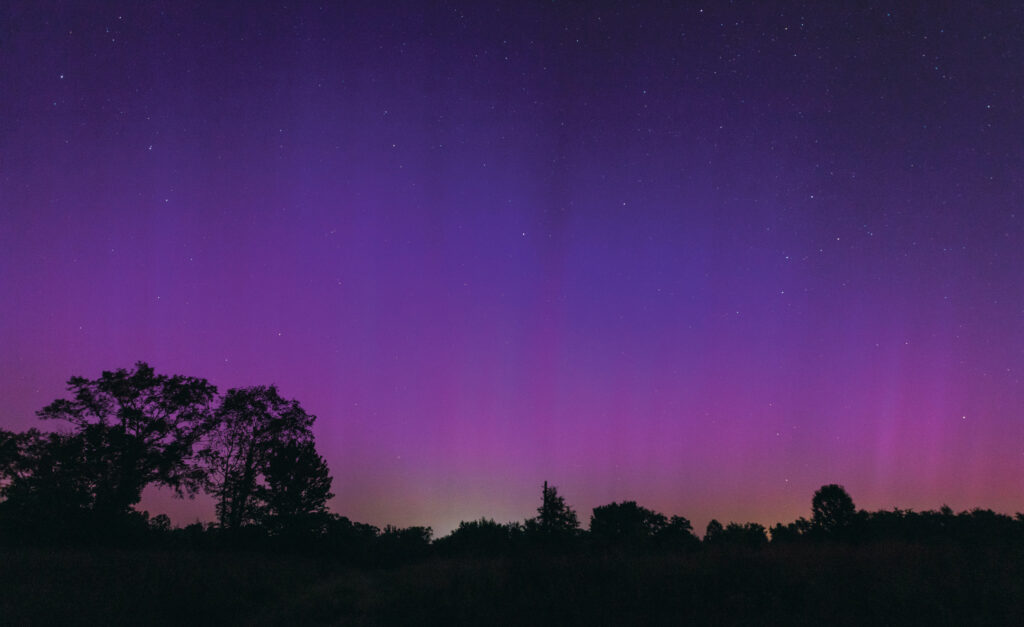A couple of weeks ago, many of us bore witness to the aurora borealis, commonly known as the northern lights, being visible in Tennessee and even farther south. The rare opportunity resulted from the Earth being hit by a “G5 Extreme Solar Storm,” according to the National Ocean and Atmospheric Administration’s Weather Prediction Center. The last storm of this intensity was in 2003.
When I first heard about it, I didn’t really think it would be possible to see the light show, so I actually ignored some of the early predictions and went on about my day. By about 5 p.m. on Thursday, May 9, I started to take notice.
It became clear how excited the meteorologists on local and national news stations were about the potential viewing opportunity in Tennessee and across other parts of the country not accustomed to ever seeing the northern lights. Experiencing them has always been on my bucket list, so prior research into where and when to go for the highest chance of actually seeing them included locations such as Canada, Alaska and Iceland. All were shaping up to be expensive endeavors.
I decided I would give it a shot later in the evening, and then I began seeing posts from people in Tennessee on the national news beginning at about 9:30 p.m. Reports had indicated the peak for my location might be in the early morning hours between 2 a.m. and 4 a.m. I got my equipment together and tried to get to sleep early.
It was painful to answer the call of my alarm at 2 a.m., not hit snooze and get out of bed. I was out the door in 15 minutes and couldn’t see a thing. I decided to drive north and find an empty field where I could wait for the cosmic light show. In doing so, I expected to actually see the color and light streaks with my naked eye. That turned out to be completely wrong.
As I was driving, I noticed a weak streak resembling the shaft of light from a rainbow but with no discernible color. At first I thought it was a very distant searchlight.
I turned toward the light beam and found a field where I parked and began to take in the spectacle. I still had only really made out the one shaft of light but began to see a few other streaks along the horizon.
By this time, I had heard that smartphones were capturing the lights with more color than you could see with the naked eye. I tried that, and sure enough, I could see the brilliant streaks and colors. I’ve since learned that our camera sensors see more wavelengths of light than our eyes can, making it possible to capture the lights but not see them.
With my camera mounted securely on a tripod, I tried a timed exposure of 15 seconds. To my surprise, it worked. My camera captured much more color than I could have ever seen with the naked eye. The 15-second exposure was also enough to capture several stars without blurring them.
I chased the northern lights for two more nights with no luck, making the first time I saw them even more special. I haven’t checked viewing the aurora borealis off of my bucket list yet because I can’t imagine not making the effort to see them again and again. Fascinating!



